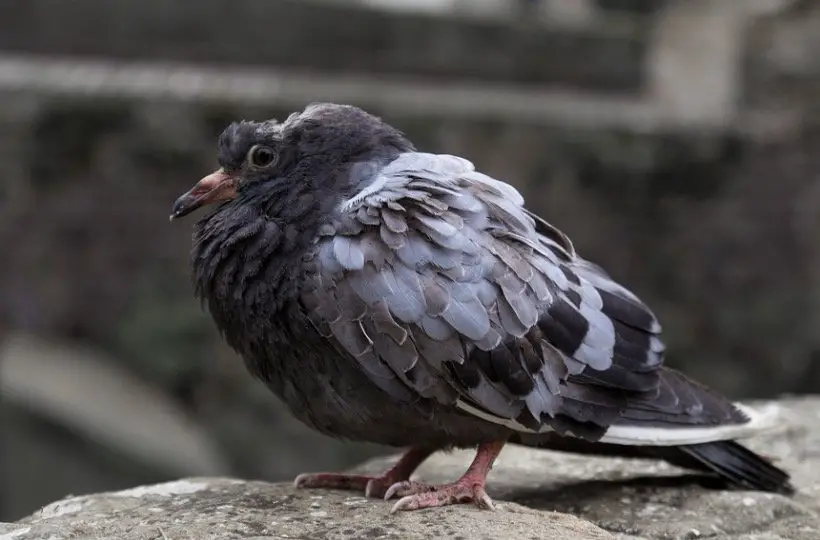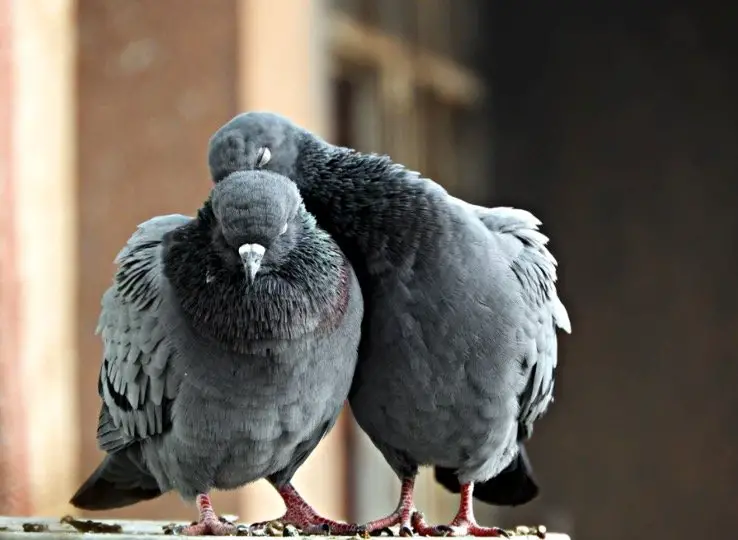Mycoplasmosis in Pigeons: Symptoms & Diagnosis

Table of Contents
Mycoplasmosis in Pigeons: All You Need To Know
A very wide range of bird species are affected by Avian mycoplasmosis that includes the pigeons also. There are two most common types and that are Mycoplasma synoviae and Mycoplasma gallisepticum.
These two types mostly affect famed birds i.e., chickens and turkeys as compared to other species and pigeons. Pigeons generally suffer from either Mycoplasma columborale or Mycoplasma columbinum.
How do pigeons get mycoplasmosis?
This type of disease is caused by bacterium. While some believe that it is easier to treat bacterial disease as compared to viral disease. But this is considered as a myth.
This disease is very challenging and very difficult to treat because birds are carriers and they do not any symptoms at all throughout their lives. It has been observed that pathogens aren`t capable of surviving for a long time outside the body of a pigeon, the most common way through which this pathogen gets transmitted is by sharing of food and water bowls.
There are a number of symptoms that the condition causes and that commonly involves the respiratory tract. The birds expel the pathogen through fluid discharge from their sinuses for instance by sneezing. Racing pigeons are the ones that gets mostly affected by this condition.
This condition can be caused to any bird no matter whether it is wild or not. The main method of transmission is contact with other birds and also there are a number of other vectors as well. The two factors that are responsible for spread are poor hygiene that is presence of rodents and presence of other animals in the area where pigeon is living.
Even the avian Mycoplasma can not be transmitted to humans. If any person has come in contact with pigeon who is carrying Mycoplasma even anyone has not touched the pigeon, that person might carry that pathogen on the shoes, clothes or even hair.

Mycoplasmosis symptoms in pigeons
This pathogen is known to cause the same clinical signs in a number of varied species such as ducks, geese, guinea fowl and racing pigeons. The condition mycoplasma causes catarrhal rhinitis, pneumonia, as well as tracheitis, and sinusitis. This condition can lead to edema of the air sac walls.
The generalized form also exists, where the birds start showing respiratory signs at first. Not only this, but the non-specific organs also gets affected by pathogen and mostly abdomial cavity. The common signs and symptoms noticed in pigeons having mycoplasmosis and that are:
- A runny nose
- Cough
- Unusual breathing sounds
- Inflammation in the face and eyelids
Once the disease occurs and it starts to progress, the pigeons might become unable to stand on their feet, they might experience lethargy and the feathers could be ruffled as well. Pigeon owners might notice two symptoms and that are blotchy skin and swollen joints.
This is very challenging and difficult as not all pigeons experience the same clinical signs and symptoms. Some birds become much more sick while the others do not show any clinical signs at all.
Mycoplasmosis Diagnosis in Pigeons
There are a number of different ways of diagnosing mycoplasmosis in pigeons and veterinarian might use a number of other ways to diagnose this condition. The way of diagnosis is through the sample collection, vet could collect the blood sample, swab from trachea of your pigeons or even eggs that might have laid by the birds.
This disease is characterized in most segments of respiratory tract and their bodies reveal the deposits of this disease. The other deposists is fibrinous as it reveal bird`s peritoneal cavity.
How can mycoplasmosis in pigeons be treated?
This disease needs to be diagnosed at a very early stage. If not diagnosed birds may develop such severe symptoms that even proper treatment wouldn`t help these birds to recover. Antibiotics are very effective in the treatment of this disease.
If pigeons recover from this infectious disease as well, they could be the carriers for the remainder of their lives. This means that if pigeons go out in the wild , the likelihood of them infecting other birds is very high.
It is always advisable to take the guidance from veterinarian before starting any kind of treatment for the pigeons, even if you have the access to these antibiotics. The pigeons might not be sensitive to any particular antibiotic because the strain Mycoplasma might infect the pigeons.
When this disease is diagnosed, the veterinarian will collect the samples for further microscopic examinations and after this process the samples are sent to lab for further bacteriological examination and it is then followed by antibiogram.
While diagnosing the disease, the veterinarian will collect samples for microscopic examinations, but will also send some to a lab where a bacteriological examination will be performed, followed by an antibiogram. In the test of antibiogram , the petri dish is taken and several samples of the germ solution are deposited on a number of small antibiotic dosages.
Mycoplasma strain can become resistant, mildly sensitive or senstive to various antibiotics. So, anyone come in contact with vet, the pigeons exhibit any respiratory symptoms that may lead to correct treatment being prescribed.
Prevention of mycoplasmosis in pigeons
The best way to prevent this disease is to clean the bird feeder on daily basis and another way is to use a solution of domestic bleach for disinfection. Although no on knows how birds or pigeons come in contact with diseases. It is always advisable to keep the pigeons in a less populated state.
When the pigeons live too close to one another, they will become sick and entire flock will develop the disease. Always isolate the birds that are showing these symptoms and tell the vet for pigeon examination at regular intervals of time.









